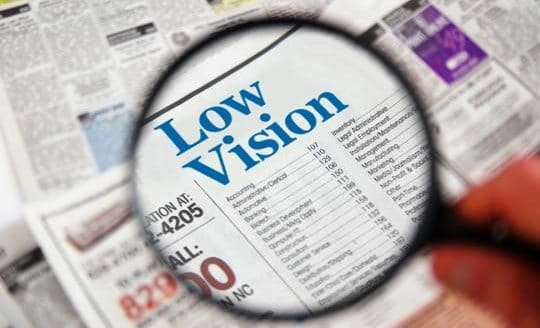Low Vision

The National Eye Institute has designated February as Low Vision Awareness Month, a time to raise awareness about visual impairment and rehabilitation for those living with the condition. An estimated 3 million Americans age 40 and older are living with low vision, which can greatly impact their functionality, productivity and general enjoyment of life.
What is Low Vision?
Low vision is defined as having 20/70 vision or poorer in the “better eye” with maximum correction. The diagnosis often means that a person must live with blurred vision, tunnel vision or blind spots.
How is Low Vision Treated?
It’s a fact: Our vision changes as we age. While it is diagnosed in all ages of people, the primary patient population with low vision is in older adults. The condition can make simple and enjoyable tasks like reading, cooking, crossword puzzles or any up-close work nearly impossible. But there are helpful aids to assist those suffering from low vision to make the most of the vision they still have and enjoy their lives to the fullest.
Magnification is the key to enhancing vision for people with low vision. Low vision devices and aids include magnifying and telescopic lenses for those who love to read, night-vision scopes, and other adaptive devices that can help maximize the remaining vision a patient has. Voice commands and computer magnification settings can help with low vision computer use.
Depending on the cause of low vision, there may be medications or surgical alternatives that can help slow the disease’s progression and provide as much vision for as long as possible
What Causes Low Vision?
The main causes of low vision include a variety of eye diseases:
- Age-related macular degeneration
- Glaucoma
- Retinitis pigmentosa (RP)
- Diabetic retinopathy
- Amblyopia
- Traumatic brain injury
- Cataracts unable to be surgically corrected
What to Do About Low Vision:
If you have a vision impairment that interferes with your ability to perform everyday activities and enjoy life, your first step is to schedule a complete eye exam to find out if you have Low Vision and if so, what is the next step?
